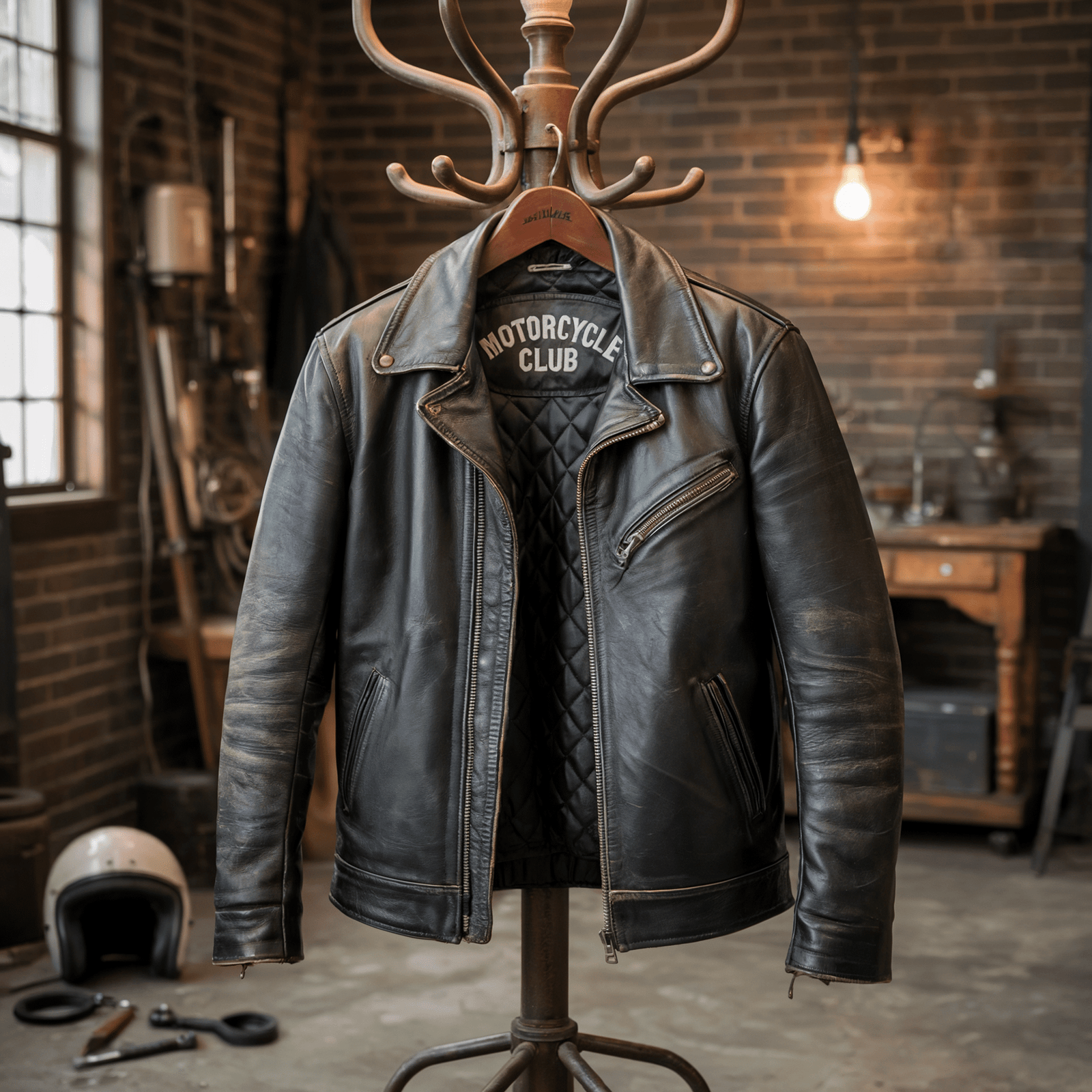Your Cart is Empty
BLACK FRIDAY SALE $25 OFF - USE COUPON BFRIDAY25 AT CHECKOUT NOW!
Menu

BLACK FRIDAY SALE $25 OFF - USE COUPON BFRIDAY25 AT CHECKOUT NOW!

What Is Wool Fabric?
by Jennifer Smith June 23, 2025 5 min read
Key Takeaways:
- Sourced primarily from sheep, wool is a versatile natural fiber with diverse types.
- Wool offers exceptional benefits for comfort and durability.
- While all wool offers warmth, Merino wool is exceptionally fine, soft, and breathable.
When winter hits, everyone reaches for warmth. That’s when wool takes the spotlight. Wool is a soft, breathable, and insulating material. This natural fibre has dressed humans for centuries.
Wool comes from sheep and has long been a favorite for making cozy sweaters and coats. These days, many brands mix it with nylon to make it stretchier and tougher. For people who love knitting or just enjoy wrapping themselves in cozy layers, wool remains a timeless winter essential.

What Is Wool Made Of?
Wool comes from animals like sheep, goats, and rabbits, with sheep being the most common source. The process of shearing, cleaning, and spinning wool into usable fiber takes time and effort, which is why wool is often priced higher than many other fabrics. But its quality and warmth make it worth it.
Types Of Wool
Different animals produce different types of wool, each with its unique texture, warmth, and ideal use. Here are ten common types of wool used in everything from cozy winter wear to luxury garments.
Merino Wool
- Source: Merino sheep, originally from Spain but now mostly bred in Australia and New Zealand.
- Features: Ultra-soft, fine, and breathable. It regulates temperature, wicks away moisture, and resists odor.
- Uses: Best for merino wool clothing like base layers, t-shirts, socks, and hiking gear.
Cashmere
- Source: Cashmere goats, primarily found in Mongolia and parts of China.
- Features: Exceptionally soft, lightweight, and warmer than regular wool.
- Uses: Ideal for high-end scarves, sweaters, shawls, and coats.
Alpaca Wool
- Source: Alpacas, native to South America, especially Peru.
- Features: Silky, strong, and warmer than sheep wool. It’s hypoallergenic and lacks lanolin.
- Uses: Common in outerwear, blankets, and soft winter accessories.
Mohair
- Source: Angora goats, mostly from South Africa and the U.S.
- Features: Lustrous and elastic with a silky texture.
- Uses: Often blended into suits, scarves, and fashion-forward knits.
Angora Wool
- Source: Angora rabbits.
- Features: Incredibly soft and fluffy but delicate. It can shed and lacks durability.
- Uses: Used in luxury knitwear and lightweight accessories.
Lambswool
- Source: First shearing of a young sheep, usually under 7 months old.
- Features: Very soft, elastic, and less likely to itch.
- Uses: Excellent for sweaters, baby clothes, and everyday knits.
Shetland Wool
- Source: Shetland sheep, native to the Shetland Islands in Scotland.
- Features: Coarse but durable, with natural shades.
- Uses: Used in tweeds, hand-knit sweaters, and woolen crafts.
Llama Wool
- Source: Llamas from South America.
- Features: Lanolin-free, breathable, and lighter than alpaca.
- Uses: Perfect for breathable sweaters, ponchos, and scarves.
Qiviut
- Source: Muskox, native to Alaska and the Arctic.
- Features: One of the warmest and softest natural fibers, non-shrinking and rare.
- Uses: Premium scarves, hats, and thermal accessories.
Virgin Wool
- Source: First-time shearing of any sheep; wool that has not been processed or recycled.
- Features: Strong, elastic, and high-quality.
- Uses: Suits, heavy coats, and formal wool wear.

The Difference between Merino Wool And Wool
The quality of wool depends on the type of sheep.Merino wool comes from Merino sheep, which produces ultra-fine, soft fibers. It feels smooth against the skin and regulates body temperature. That’s why merino wool athletic wear is the top choice that keeps you cool during workouts and warm during recovery.
In contrast, traditional wool comes from various breeds and is generally thicker and coarser. It’s better suited for heavy outerwear, rugs, or insulation. While still warm and durable, it's not ideal for layering next to your body.
If you’re looking for breathable, next-to-skin performance, merino wool garments are worth the investment. Not sure where to buy merino wool clothing? Check high-end brands, as it is very pricey.
Care Tips
Wool doesn’t need a ton of washing but just some smart handling. Use cold water and go for a gentle detergent if you’re hand-washing. If your item is labeled machine wash or superwash wool, you can toss it in the washer, but keep the setting mild.
Avoid high heat and always air-dry. If you’re working with wool yarn for any DIY project, check the crochet gauge to prevent stretching.
Benefits Of Wool
A significant benefit of choosing made-in-USA wool clothing is that you support the domestic economy. Whether you’re wearing wool sweaters, crochet garments, or wrapping yourself in a cozy fiber blend, wool offers lasting comfort and versatility.
Wool is soft, breathable, and naturally keeps you warm. Wool garments feel like wearing a personal heater in winter. It adjusts to your body temperature, so you don’t overheat. It also keeps sweat away from your skin.
Wool is durable and keeps its shape even after tons of wear. Wool shirts made in usa last longer, even up to several years. This is the reason why American-made wool clothing is popular in colder countries.
Uses Of Wool
Wool is not just for sweaters. Here’s how it shows up in different areas:
Lining Material For Leather Jackets
Wool is a go-to choice for lining leather jackets during colder months. It adds warmth without bulk and feels soft against the skin. You can customize your leather jacket in different styles, such as fully lined or just on collars and sleeves. Wool linings are also dyeable, so they easily match your design.
Medical Purpose
Wool is used in medical textiles for its natural antibacterial properties and breathability. It’s often found in wound dressings, padding, and orthopedic supports.
Home Textiles
Thick wool fibers, like the worsted weight yarn, are durable, making them perfect for carpets and rugs. They insulate floors, absorb noise, and add a cozy touch to interiors.
Clothing And Accessories
Wool is a go-to for winter wardrobes. From everyday sweaters to American-made wool shirts, this fabric blends comfort and durability. Many brands now offer 100% wool clothing made in the USA, especially for colder climates.
Its warmth and flexibility make it ideal for wool athletic clothing, scarves, mittens, hats, socks, and snug blankets.
FAQs
What Is Wool And How Is It Made?
Wool is a natural fiber produced by animals like sheep. Factory workers shear, clean, and spin wool into yarn or fabric.
What Are The Different Types Of Wool?
There are many types of wool available. Some of the important types include Merino, Cashmere, Alpaca, Mohair, and Angora.
Is Wool Sustainable And Eco-Friendly?
Yes, wool is biodegradable and renewable, making it a more eco-friendly option than many synthetic fibers.
How Do You Wash And Care For Wool Clothing?
Use cold water and gentle detergent. Hand wash or choose the delicate cycle and air-dry flat.
What Are The Benefits Of Wearing Wool?
Wool is breathable, warm, odor-resistant, and naturally moisture-wicking.
Does Wool Keep You Warm In Winter And Cool In Summer?
Yes, wool insulates in cold and breathes in heat, helping regulate your body temperature year-round.
What Is The Difference Between Merino Wool And Regular Wool?
Merino wool is softer, finer, and more breathable than regular wool, making it better for activewear.
Why Does Wool Sometimes Feel Itchy?
Itchiness comes from thicker wool fibers that can irritate sensitive skin. Finer wool, like Merino, feels softer.
Can Wool Be Used For Home Insulation?
Yes, wool is naturally insulating and moisture-resistant, making it a great eco-friendly option for home insulation.
Is Wool Warmer Than Cotton?
Yes, unlike cotton wool is warmer because it traps heat and stays warm even when damp.
Conclusion
From warm sweaters to comfy blankets, wool shows why it's always popular in homes and fashion. If you like to be cozy and look good in winter, wool is a great choice. The material is commonly used to line jackets to add to their comfort and practicality.
Leave a comment
Comments will be approved before showing up.
Also in Blog | Leather Skin Shop

Types of Sleeves in a Leather Jacket
by Jennifer Smith August 24, 2025 6 min read
The different types of sleeves shape the shoulder, control the movement, and change how the leather jacket looks in motion. There are various types of sleeves, such as cap sleeves, bell sleeves, raglan sleeves, and more.

How to Get Smell Out of Leather Jacket?
by Jennifer Smith August 08, 2025 4 min read
Over time, a leather jacket can smell like sweat, mildew, or smoke. But do not worry, there are safe, proven ways to get rid of those unpleasant smells at home.

What Is A Trench Coat
by Jennifer Smith August 02, 2025 6 min read
A trench coat is a long, lightweight outerwear piece designed to protect against wind and rain. Its defining features include a double-breasted front, a belted waist, wide lapels, and often epaulets and a storm flap.
Leather Jackets for Men
Leather Jackets for Women
Accessories for Men & Women
Recent Articles
- Types of Sleeves in a Leather Jacket
- How to Get Smell Out of Leather Jacket?
- What Is A Trench Coat
- What Is A Peacoat Jacket?
- What is Polyester Fabric?
- What is Satin Fabric?
- What is Shearling Leather?
- Varsity Jacket Or Letterman Jacket? Everything You Need To Know Before Buying
- What is Semi Aniline Leather?
- What Is Cotton Fabric?
Size Chart